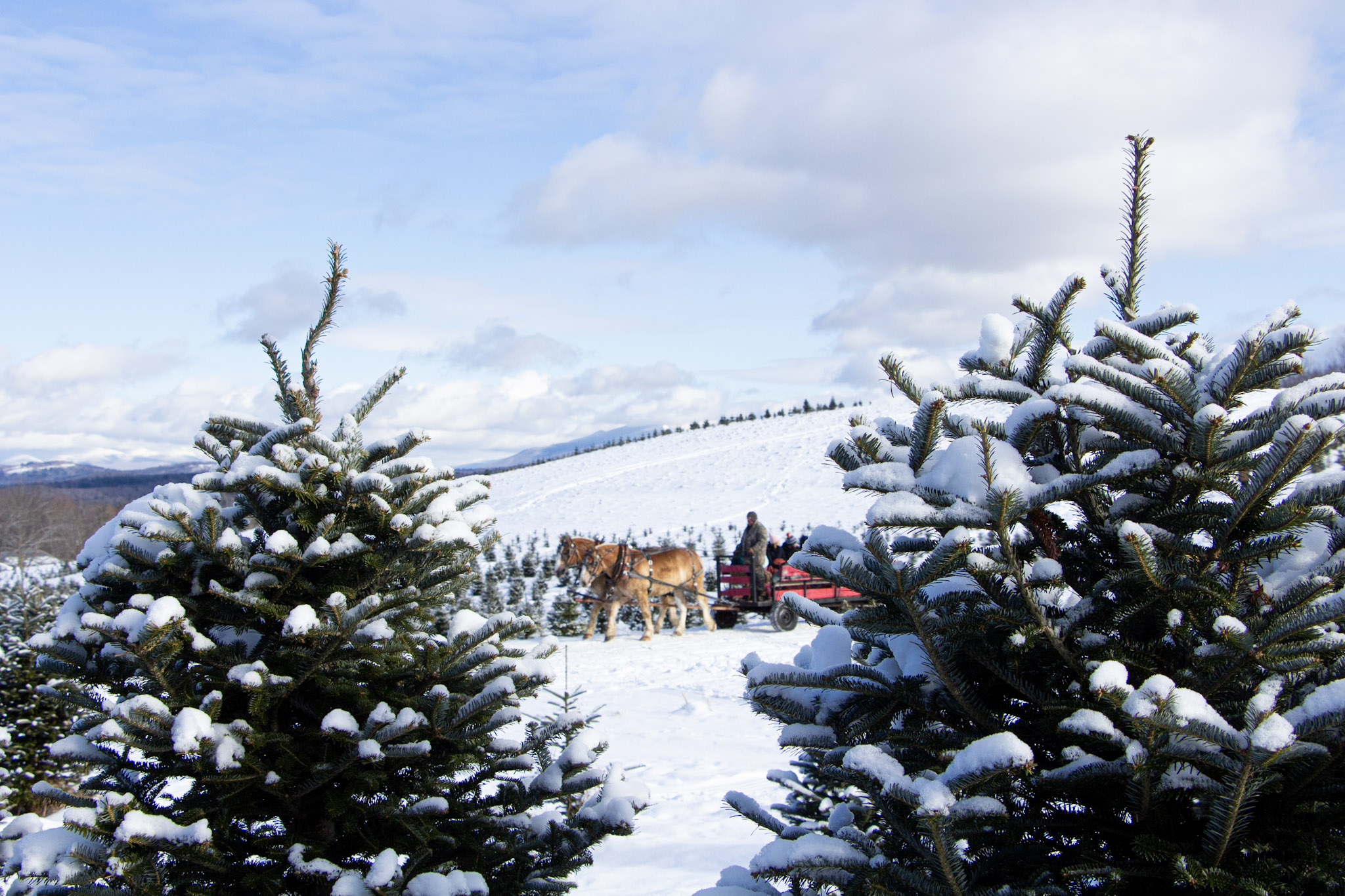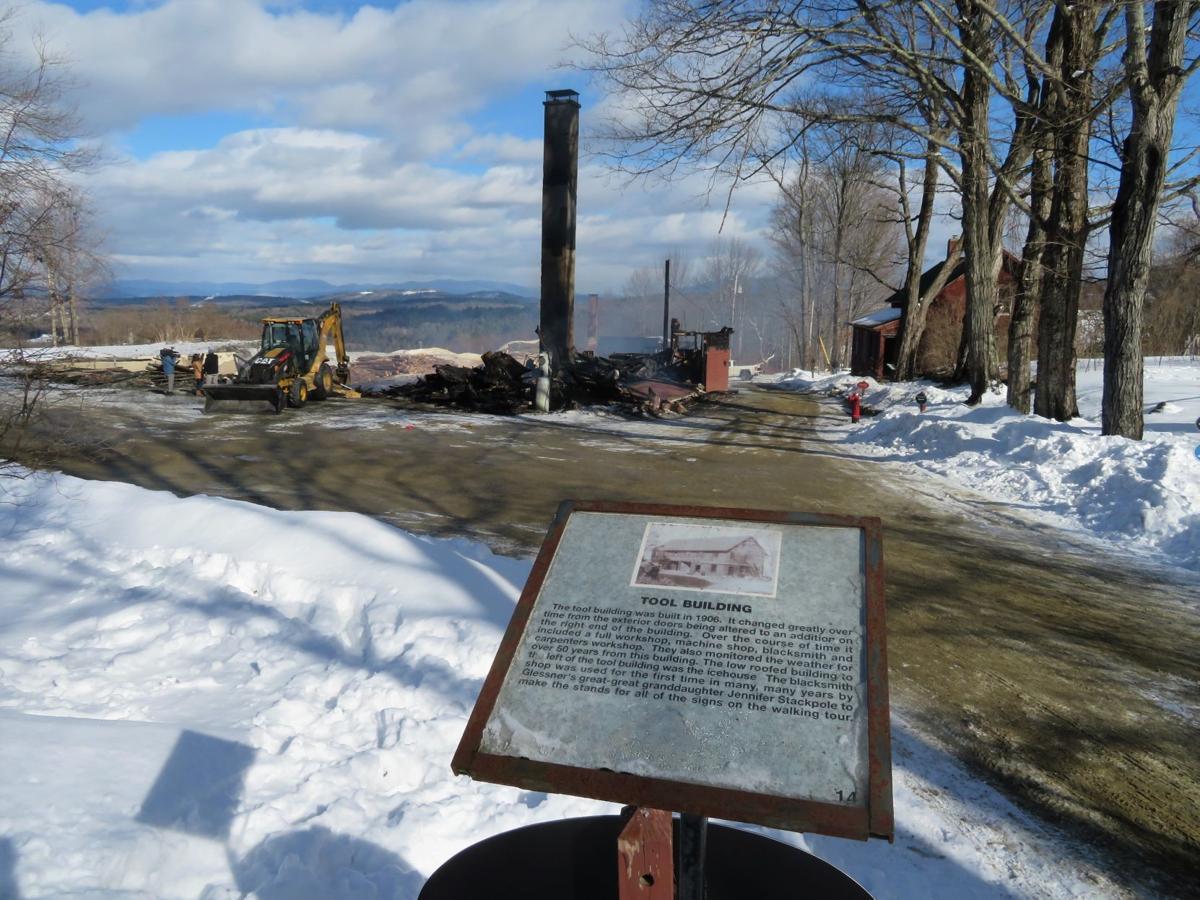Heartbreaking.
That’s the word used over and over in the wake of a fire that leveled two historic buildings this month at The Rocks, the 1,400-acre Bethlehem estate owned by the Society for the Protection of New Hampshire Forests. That’s been the reaction of families who venture here each December in search of the perfect Christmas tree, of newlyweds who exchanged vows there with the backdrop of the Presidential Mountains, of locals for whom The Rocks is an important, picturesque piece of history.
“Every time I went to The Rocks, I could feel the history oozing out of the ground,” said Niffer Stackpole, whose great-great-grandfather, John Jacob Glessner, established The Rocks as a family estate and working farm near the turn of the 20th century. “When I heard about the fire, my heart sank.”

The Feb. 13 fire, which is thought to have been accidental, broke out in the 115-year-old Tool Building and quickly engulfed the sprawling structure, along with the old Electrical Plant-turned-gift shop adjacent to it. Firefighters managed to save the home a literal stone’s throw from the Tool Building, where longtime manager Nigel Manley lives with his wife, and none of the other historic buildings at The Rocks were involved in the fire.
But it’s the Tool Building, constructed in the summer and fall of 1903, that was the hub of activities at the Forest Society’s North Country Conservation & Education Center. It was here, in this four-story, barn-red building that Christmas tree shoppers came to browse for whimsical gifts. It was here that school children came to learn about the process of growing Christmas trees, that visitors during sugaring season heard the legends and history of making maple syrup, and wedding guests danced in celebration of brides and grooms.
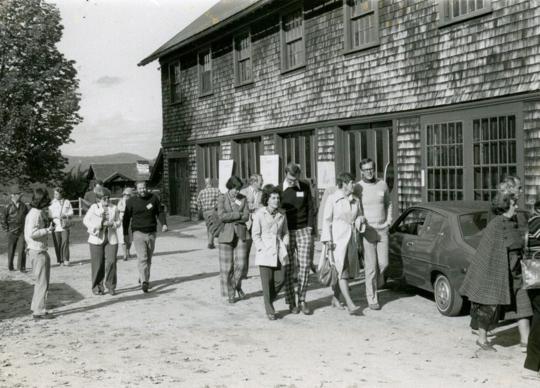
Long history
The Glessner family of Chicago — John, his wife Frances, and their children Fanny and George — first came to Bethlehem in the 1880s, seeking the balm of fresh air to ease George’s hay fever. In 1882, Glessner purchased a 100-acre farm, and the following year built the “Big House,” a 19-room mansion designed in the Queen Anne style by architect Isaac Ellwood Scott.
For many years, the family spent summers at The Rocks, coming by train from Chicago and sending a bevy of servants ahead of them to set up house. But the estate was more than a summer residence. It was a working farm, with sheep, dairy cows, hogs. There were huge vegetable gardens that fed the family and its large staff through the summer and formal flower gardens — some designed by the firm of Frederick Law Olmsted — whose fresh blooms were cut and displayed at the Big House and other residences.
From the beginning, The Rocks was also an effort at conservation and best farming practices.
Glessner was a founding father of International Harvester and, as Stackpole recalls from family lore, had a brilliant and creative mind. Over time, he added property to his Bethlehem estate, in large part to protect timber stands in danger of being clear cut. Glessner experimented with and refined the use of modern agricultural equipment here.
He designed and built a windmill to pump water from local springs, then a reservoir and series of water mains to feed the property. Through the years, the family added structures throughout the estate — some designed by noted Chicago architect Herman Von Holst — including other residences, a bee house, an observatory and a greenhouse.
Among these were the Electric Plant in 1910, which generated power for the estate, and the Tool Building, constructed (according to journals referenced by the Glessner House in Chicago) in 1903 and added onto in 1907.
The Tool Building housed an array of machines used to create and repair equipment used on the estate and also became a gathering place for concerts and dances for the large staff of workers. A shed attached to the building served as the ice house, filled each winter with blocks of ice cut from nearby Baker Brook, which were used throughout the summer to fill iceboxes on the estate before electrical refrigeration.
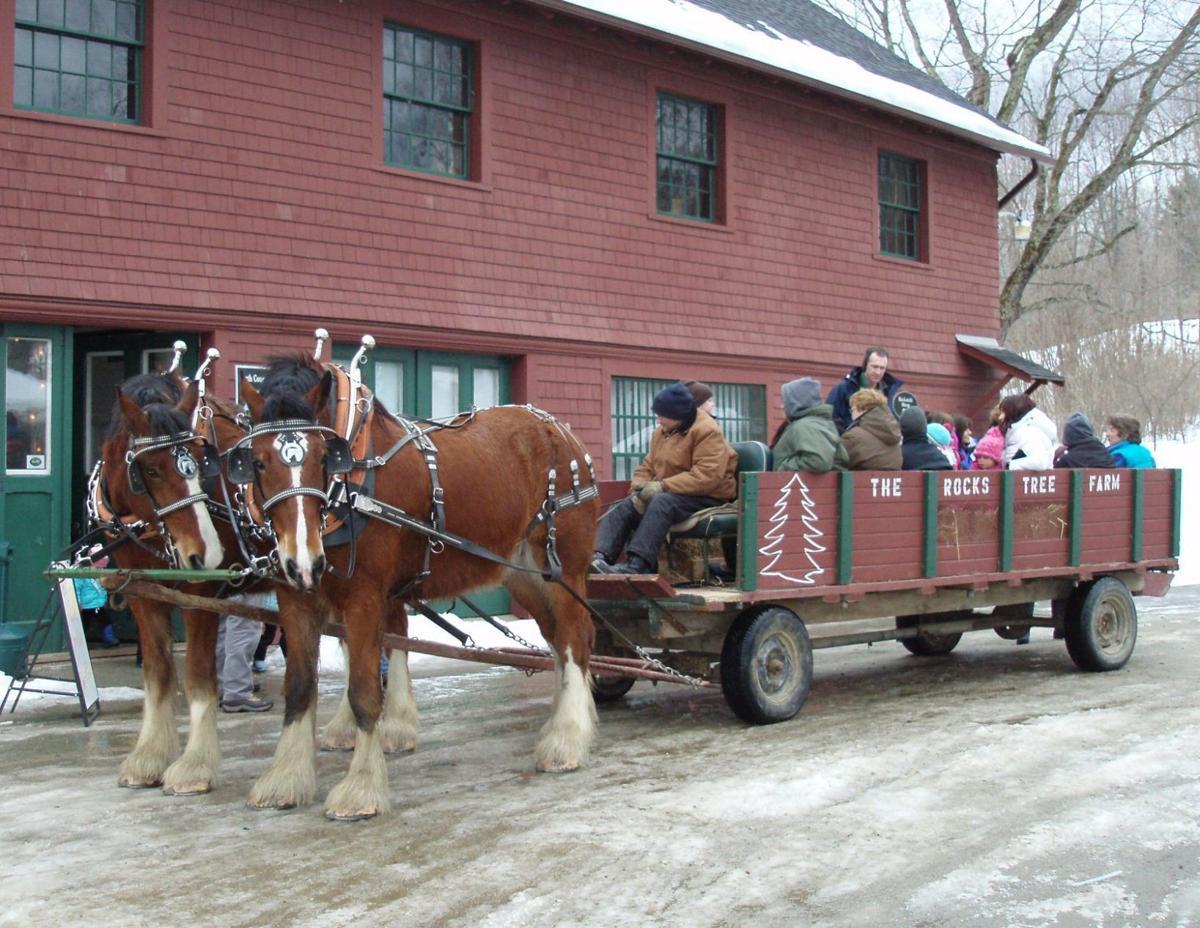
About 15 years ago, Manley invited Stackpole, who was working as a blacksmith then, to use her great-great-grandfather’s shop to build a series of signposts for use on the property. She described the design of the forge as meticulously efficient. While working in the century-old shop, Stackpole discovered a twisting wrench with the initials JJG – for John Jacob Glessner – stamped into the handle.
“I coveted this wrench. I used it to twist hot metal into perfect spirals,” she said. “It was designed and made in John J. Glessner’s perfect fit and finish style, a beautiful tool to look at and an easy, efficient tool to use.”
The Glessners continued to summer at The Rocks for many years.
“They had sheep until 1940 and pigs that were housed in the sawmill-pigpen (now the home of the Maple Museum and sugar house),” said Brown, who is also president of the Bethlehem Heritage Society. “When Gramp first started to work there, he made butter and was in charge of the sheep herd. They would send 25 pounds of butter to Chicago every winter.”
Her grandfather also looked after a herd of Jersey cows and moved his way up to superintendent of the estate until his retirement in 1965, working over time for Glessner, his daughter Frances Glessner Lee (Fanny) and his granddaughter Martha Batchelder.
While the Big House on the hill and other residences built later were removed in the 1940s, the property remained a working farm through the 1970s. In 1978, Glessner’s grandchildren deeded the 1,400-acre estate to the Forest Society with the requirement that there always be a crop in the field.
The entire property was placed on the National Register of Historic Places in 1984, a century after the Glessners made this place their summer home.
Over time, many of the estate’s structures have been refurbished for various purposes. The Sawmill-Pigpen building now contains a working sugar house and a maple sugaring museum. The carriage barn, a large stone-and-wood structure built in 1884 serves mainly as storage. A former residence just downhill from where the Tool Building stood was used for years as office space and is currently vacant.
But it was the Tool Building that was the bustling hub of activity through all the seasons at The Rocks.

Memories
Word of the fire spread quickly, including on social media, where shared videos showed what looked like an inferno, with flames blasting through windows and leaping into the sky. The roads leading to The Rocks were closed off, and from a distance it looked like the entire estate was burning.
“I called my mom,” said Kate Price of Bow, who grew up in Bethlehem and still has family in town. “She could see the smoke from the top of Long Hill. I was thinking everything was on fire.”
Price recalled spending time at The Rocks as a child in the early 1980s, when it was still a dairy farm, and she was friends with the farmer’s daughter.
“They lived upstairs (in the Tool Building). That’s where we would have sleepovers,” she said. “She would name cows after her friends. There was one cow named Kate.”
During her high school years, when she rode her bike to school, Price said, she always took a small detour through The Rocks, climbing up the hill and riding past the old buildings.
“I always felt like it was an English countryside up there. It just felt like I wasn’t in Bethlehem, New Hampshire,” she said.
When she heard about the fire, Price said she worried the Carriage Barn, where she had spent many happy childhood days playing, would also be lost. Although she was relieved to hear the barn is still there, the loss of the other buildings was difficult to believe.
“It was heartbreaking,” she said. “I definitely shed a tear.”
Looking forward
Beyond hosting a large gift shop during the holiday season and hosting educational programs, the Tool Building housed the offices of Manley and other employees at The Rocks. The blacksmith shop, no longer used for its original purpose, had become the workshop where a team of wreath decorators worked through the days of November and into December to adorn handmade wreaths.
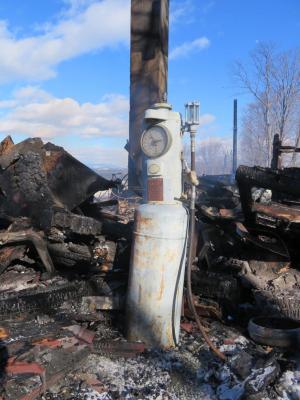
“My granddad’s office was in the building. My office was in the building. My desk was right by the chimney. It just has a lot of sentiment,” said Brown. “It was amazing the number of people who came into that building and looked at it and marveled at the structure and how it was built. You can put something else there, but it’s gone. It’s wrenching.”
For now, the Forest Society is considering both how to address the loss in the immediate future and what shape its North Country Conservation & Education Center might take in the long term. The Rocks welcomes bus tours throughout the year for various educational programs, works with the local elementary school on other programs, and had been planning to begin its annual maple sugaring tours in about a month. The Rocks also hosts weddings and had several booked for the coming summer.
Manley said he and the staff have been reaching out to the couples who plan to be married at The Rocks in the coming year.
“The first three we heard from all wanted to get married here, still,” he said. “That shows how much people feel about this place.”
A bee-keeping program scheduled to be held at the Tool Building has been moved to the Bethlehem Library. The annual Maple Dinner on April 6 will still happen, at a location to be determined, Manley said. And he’s working to determine if and where the maple programs will happen next month.
Manley began working at The Rocks in 1986 and has lived on the property for more than 30 years. He planted the first Christmas trees here in 1989 and harvested in 2005. He has worked tirelessly to help the estate of John Jacob Glessner become more than a working farm, more than a destination for buying Christmas trees, more than a conservation effort. The Rocks now is a place where people come to walk along the trails, learn about wildlife, celebrate the view, take a step — if only for a moment — into the past.
The fire was devastating to Manley, too. But the silver lining has been the outpouring of support, from friends and strangers, local residents and people from far away.
“When I started, I didn’t realize what this place was to people,” he said. “This has shown me more than ever what the place means to the community.”
The Forest Society has established a fund to help restore operations at The Rocks. More information is at https://forestsociety.org/project/rocks-fire-fund.
